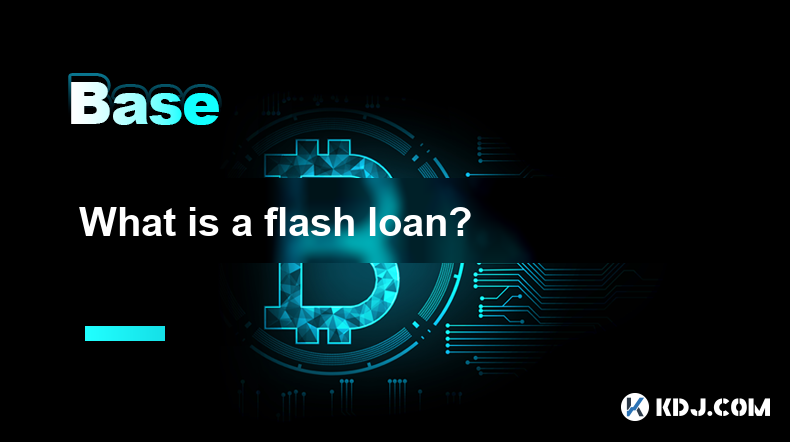-
 Bitcoin
Bitcoin $83,588.1387
-10.22% -
 Ethereum
Ethereum $2,098.2953
-11.49% -
 Tether USDt
Tether USDt $0.9999
0.01% -
 XRP
XRP $2.3431
-12.12% -
 BNB
BNB $569.8329
-5.80% -
 Solana
Solana $136.2473
-16.93% -
 USDC
USDC $0.9999
0.01% -
 Dogecoin
Dogecoin $0.1927
-12.73% -
 Cardano
Cardano $0.8065
-18.37% -
 TRON
TRON $0.2354
-3.25% -
 Pi
Pi $1.7546
1.55% -
 Hedera
Hedera $0.2406
-3.84% -
 UNUS SED LEO
UNUS SED LEO $9.9312
-0.07% -
 Chainlink
Chainlink $13.8417
-16.11% -
 Stellar
Stellar $0.2839
-14.16% -
 Avalanche
Avalanche $19.9584
-15.48% -
 Litecoin
Litecoin $102.0562
-12.93% -
 Sui
Sui $2.4025
-19.13% -
 Toncoin
Toncoin $3.0694
-8.42% -
 Shiba Inu
Shiba Inu $0.0...01274
-9.94% -
 MANTRA
MANTRA $6.7228
-9.17% -
 Polkadot
Polkadot $4.2127
-14.83% -
 Bitcoin Cash
Bitcoin Cash $302.0391
-5.75% -
 Ethena USDe
Ethena USDe $0.9989
-0.02% -
 Hyperliquid
Hyperliquid $16.2059
-17.47% -
 Dai
Dai $1.0000
-0.02% -
 Bitget Token
Bitget Token $4.1631
-9.81% -
 Uniswap
Uniswap $6.7965
-14.28% -
 Monero
Monero $214.2606
-7.58% -
 NEAR Protocol
NEAR Protocol $2.8009
-15.68%
What is impermanent loss? How to avoid it?
Impermanent loss (IL) in DeFi occurs when the price ratio of assets in a liquidity pool changes, reducing potential profits compared to holding. Mitigating IL involves choosing less volatile pairs, monitoring market conditions, and employing hedging strategies; however, complete avoidance is impossible.
Mar 01, 2025 at 01:01 pm

Key Points:
- Impermanent loss (IL) is the difference between holding crypto assets directly versus providing liquidity in a decentralized exchange (DEX).
- IL arises from fluctuating price ratios between the asset pairs in a liquidity pool.
- Strategies to mitigate IL include choosing less volatile asset pairs, adjusting your liquidity provision based on market conditions, and utilizing hedging strategies.
- Understanding the risks and mechanics of IL is crucial before participating in liquidity provision.
What is Impermanent Loss?
Impermanent loss (IL) is a unique risk associated with providing liquidity to decentralized exchanges (DEXs). Unlike traditional exchanges, DEXs often rely on automated market makers (AMMs) that use liquidity pools. These pools contain pairs of cryptocurrencies, and liquidity providers (LPs) deposit assets into these pools to earn trading fees. The core of IL lies in the price fluctuations of the asset pair within the pool. If the price ratio of your deposited assets changes significantly from when you initially provided liquidity, you might experience an impermanent loss when you withdraw. This isn't a permanent loss until you withdraw your assets, and the trading fees earned can potentially offset the IL.
How Does Impermanent Loss Occur?
Imagine you provide liquidity to a pool with an equal value of Token A and Token B. The price ratio at the time of deposit is 1:1. However, the price of Token A doubles while the price of Token B remains unchanged. To maintain the 50/50 ratio in the pool (as required by most AMMs), the protocol will automatically adjust the balance, selling some of your Token A to buy more Token B. When you withdraw, you'll have less of Token A and more of Token B than you initially deposited, resulting in a potential loss compared to simply holding both assets individually. The magnitude of this loss depends entirely on the price movements.
How to Avoid or Minimize Impermanent Loss?
There isn't a foolproof method to completely avoid IL, as it's inherent to the nature of liquidity provision in AMMs. However, several strategies can help minimize it:
- Choose Less Volatile Asset Pairs: Providing liquidity to pools with assets that have relatively stable price movements reduces the likelihood of significant price ratio changes. Pairs with correlated assets also tend to experience less IL.
- Monitor and Adjust Your Position: Actively track the price movements of your asset pair. If you anticipate a significant price divergence, consider withdrawing your liquidity before the loss becomes substantial. This requires constant market monitoring and timely action.
- Utilize Hedging Strategies: More advanced techniques like using options or futures contracts can help offset potential losses from price fluctuations. This involves complex strategies and understanding of derivatives markets. It's generally recommended only for experienced traders.
- Focus on Trading Fees: The trading fees earned from providing liquidity can sometimes offset the IL, particularly in highly active pools. However, this isn't guaranteed and depends on the trading volume of the pool.
- Long-Term Perspective: If you believe in the long-term growth of both assets in the pair, the potential IL might be less concerning, especially if the trading fees earned over time are significant enough to offset it.
Understanding the Mechanics of Impermanent Loss Calculations
Calculating the exact amount of IL is complex and depends on the specific AMM used and the price movements of the assets. Many online calculators are available to simulate IL based on different scenarios. These calculators require you to input the initial investment, the initial and final prices of each asset, and the specific AMM used.
Impermanent Loss vs. Permanent Loss
It’s crucial to differentiate between impermanent and permanent loss. Impermanent loss is only realized when you withdraw your liquidity from the pool. Until then, it remains unrealized. A permanent loss occurs when the value of your assets drops below your initial investment, even if you hadn't provided liquidity. IL only affects the potential profit compared to holding.
Common Questions and Answers:
Q: Is impermanent loss always negative?
A: No. If the price of both assets in the pair increases proportionally, you can still profit even after accounting for IL. The trading fees earned can also outweigh any potential IL.
Q: Can I avoid impermanent loss entirely?
A: No. Impermanent loss is an inherent risk of providing liquidity to AMMs due to price fluctuations. However, you can mitigate the risk through various strategies.
Q: Are all liquidity pools equally risky regarding IL?
A: No. Pools with less volatile assets generally have lower IL risk compared to those with highly volatile assets. The specific AMM's mechanics also play a role.
Q: What is the best strategy to minimize IL?
A: There's no single "best" strategy. The optimal approach depends on your risk tolerance, market knowledge, and the specific asset pair. A combination of strategies may be most effective.
Q: How do I calculate my impermanent loss?
A: You can use online calculators that take into account the initial and final prices of your assets, the initial investment, and the AMM algorithm.
Q: Should I avoid liquidity providing altogether due to IL?
A: Not necessarily. The potential for earning trading fees can offset IL in many cases. However, you must fully understand the risks involved before participating.
Q: What are the benefits of providing liquidity despite the risk of IL?
A: The primary benefit is earning trading fees. Additionally, some platforms offer incentives to liquidity providers, further increasing the potential returns.
Disclaimer:info@kdj.com
The information provided is not trading advice. kdj.com does not assume any responsibility for any investments made based on the information provided in this article. Cryptocurrencies are highly volatile and it is highly recommended that you invest with caution after thorough research!
If you believe that the content used on this website infringes your copyright, please contact us immediately (info@kdj.com) and we will delete it promptly.
- Bitcoin (BTC) Deep Drawdown Is Now on the Table According to This Crypto Strategist
- 2025-03-04 21:25:39
- President Trump Includes Five Cryptocurrencies in a New Strategic Reserve
- 2025-03-04 21:25:39
- SBI VC Trade Becomes First Firm in Japan to Receive Regulatory Approval to Handle Stablecoins
- 2025-03-04 21:25:39
- Surprising Idea Hits the Crypto World: Charles Hoskinson Wants to Upgrade Dogecoin (DOGE)
- 2025-03-04 21:25:39
- Donald Trump Had Announced His Intention to Add XRP, Solana, and Cardano to the USA’s Strategic Reserve
- 2025-03-04 21:25:39
- Solana (SOL) Price Surges 24% Over the Weekend, Only to Plummet 15.13% in the Last 24 Hours
- 2025-03-04 21:25:39
Related knowledge

What is a flash loan?
Mar 04,2025 at 08:48pm
Key Points:Flash loans are instantaneous, uncollateralized loans within decentralized finance (DeFi).They are repaid within a single transaction block, mitigating risk for lenders.They are primarily used for arbitrage opportunities and complex DeFi strategies.While lucrative, flash loans require sophisticated coding and carry significant risks.Several p...

What is mining?
Mar 04,2025 at 09:00pm
Key Points:Mining is the process of verifying and adding new transactions to a blockchain.It requires specialized hardware and significant computational power.Miners are rewarded with cryptocurrency for their efforts.Different cryptocurrencies use different mining algorithms.Mining profitability depends on factors like hardware costs, electricity prices...

What is a Trusted Execution Environment (TEE)?
Mar 04,2025 at 09:12pm
Key Points:Definition: A Trusted Execution Environment (TEE) is an isolated region within a computer's processor, designed to protect sensitive data and code from unauthorized access, even by the operating system or other software. In the context of cryptocurrencies, this is crucial for securing private keys and transaction processes.How TEEs work: TEEs...

What is the key exchange protocol?
Mar 04,2025 at 04:00pm
Key Points:Key exchange protocols are crucial for secure communication in the cryptocurrency world, enabling parties to establish shared secrets without ever directly transmitting them.Several protocols exist, each with its strengths and weaknesses regarding security, efficiency, and complexity.Understanding the intricacies of these protocols is vital f...

What are the characteristics of the AES encryption algorithm?
Mar 04,2025 at 04:37pm
Key Points:AES's strength lies in its symmetric key structure, offering robust confidentiality.The algorithm's flexibility allows for various key sizes (128, 192, 256 bits), influencing security levels.AES utilizes a substitution-permutation network, combining substitution boxes (S-boxes) and permutation layers for strong diffusion and confusion.Its wid...

What is a digital signature?
Mar 04,2025 at 09:19pm
Key Points:Digital signatures in cryptography are not the same as your typical handwritten signature.They use asymmetric cryptography to verify the authenticity and integrity of digital data.A digital signature ensures non-repudiation, meaning the signer cannot deny signing the data.The process involves hashing, signing with a private key, and verifying...

What is a flash loan?
Mar 04,2025 at 08:48pm
Key Points:Flash loans are instantaneous, uncollateralized loans within decentralized finance (DeFi).They are repaid within a single transaction block, mitigating risk for lenders.They are primarily used for arbitrage opportunities and complex DeFi strategies.While lucrative, flash loans require sophisticated coding and carry significant risks.Several p...

What is mining?
Mar 04,2025 at 09:00pm
Key Points:Mining is the process of verifying and adding new transactions to a blockchain.It requires specialized hardware and significant computational power.Miners are rewarded with cryptocurrency for their efforts.Different cryptocurrencies use different mining algorithms.Mining profitability depends on factors like hardware costs, electricity prices...

What is a Trusted Execution Environment (TEE)?
Mar 04,2025 at 09:12pm
Key Points:Definition: A Trusted Execution Environment (TEE) is an isolated region within a computer's processor, designed to protect sensitive data and code from unauthorized access, even by the operating system or other software. In the context of cryptocurrencies, this is crucial for securing private keys and transaction processes.How TEEs work: TEEs...

What is the key exchange protocol?
Mar 04,2025 at 04:00pm
Key Points:Key exchange protocols are crucial for secure communication in the cryptocurrency world, enabling parties to establish shared secrets without ever directly transmitting them.Several protocols exist, each with its strengths and weaknesses regarding security, efficiency, and complexity.Understanding the intricacies of these protocols is vital f...

What are the characteristics of the AES encryption algorithm?
Mar 04,2025 at 04:37pm
Key Points:AES's strength lies in its symmetric key structure, offering robust confidentiality.The algorithm's flexibility allows for various key sizes (128, 192, 256 bits), influencing security levels.AES utilizes a substitution-permutation network, combining substitution boxes (S-boxes) and permutation layers for strong diffusion and confusion.Its wid...

What is a digital signature?
Mar 04,2025 at 09:19pm
Key Points:Digital signatures in cryptography are not the same as your typical handwritten signature.They use asymmetric cryptography to verify the authenticity and integrity of digital data.A digital signature ensures non-repudiation, meaning the signer cannot deny signing the data.The process involves hashing, signing with a private key, and verifying...
See all articles





















































































